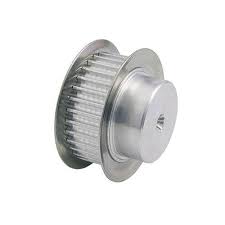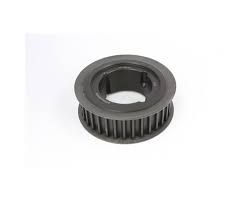Product Description
HTD 8M-20 pulley for belt width 20 mm
22-8M-20, 24-8M-20, 26-8M-20, 28-8M-20, 30-8M-20, 32-8M-20,
24-8M-20, 36-8M-20, 38-8M-20, 40-8M-20, 44-8M-20, 48-8M-20,
56-8M-20, 64-8M-20, 72-8M-20, 80-8M-20, 90-8M-20
HTD 8M-30 pulley for belt width 30 mm
22-8M-30, 24-8M-30, 26-8M-30, 28-8M-30, 30-8M-30, 32-8M-30,
34-8M-30, 36-8M-30, 38-8M-30, 40-8M-30, 44-8M-30, 48-8M-30,
56-8M-30, 64-8M-30, 72-8M-30, 80-8M-30, 90-8M-30, 112-8M-30
HTD 8M-50 pulley for belt width 50 mm
22-8M-50, 24-8M-50, 26-8M-50, 28-8M-50, 30-8M-50, 32-8M-50,
34-8M-50, 36-8M-50, 38-8M-50, 40-8M-50, 44-8M-50, 48-8M-50,
56-8M-50, 64-8M-50, 72-8M-50, 80-8M-50, 90-8M-50, 112-8M-50
HTD 8M-85 pulley for belt width 85 mm
22-8M-85, 24-8M-85, 26-8M-85, 28-8M-85, 30-8M-85, 32-8M-85
34-8M-85, 36-8M-85, 38-8M-85, 40-8M-85, 44-8M-85, 48-8M-85
56-8M-85, 64-8M-85, 72-8M-85, 80-8M-85, 90-8M-85, 112-8M-85
/* January 22, 2571 19:08:37 */!function(){function s(e,r){var a,o={};try{e&&e.split(“,”).forEach(function(e,t){e&&(a=e.match(/(.*?):(.*)$/))&&1
| Certification: | CE, ISO |
|---|---|
| Pulley Sizes: | Type C |
| Manufacturing Process: | Forging |
| Material: | Aluminum |
| Surface Treatment: | Polishing |
| Application: | Chemical Industry, Grain Transport, Mining Transport, Printer Cutter |
| Samples: |
US$ 1/Piece
1 Piece(Min.Order) | |
|---|
| Customization: |
Available
| Customized Request |
|---|

How are HTD pulleys used in the production of packaging and labeling machinery?
HTD pulleys play a crucial role in the production of packaging and labeling machinery, enabling efficient and precise movement of components and materials. They are utilized in various ways to facilitate the packaging and labeling processes. Here’s a detailed explanation of how HTD pulleys are used in the production of packaging and labeling machinery:
1. Conveyor Systems:
HTD pulleys are commonly employed in conveyor systems that transport packages or products along a production line. The pulleys, combined with HTD belts, drive the movement of the conveyor belts, ensuring smooth and continuous transportation of goods. The teeth on the pulleys mesh with the teeth on the belts, providing positive engagement and preventing slippage. This enables precise control over the speed and positioning of the conveyed items, facilitating efficient packaging and labeling operations.
2. Label Dispensing Mechanisms:
In labeling machinery, HTD pulleys are utilized in label dispensing mechanisms. These mechanisms are responsible for accurately dispensing labels onto products or packaging materials. The pulleys, along with suitable belts or timing systems, drive the movement of the label rolls and ensure precise positioning and timing of label application. The positive engagement between the teeth on the pulleys and belts allows for consistent label feed and accurate placement, resulting in properly labeled products.
3. Print Heads and Printhead Positioning:
HTD pulleys are used in packaging machinery equipped with print heads for printing information, codes, or graphics on packaging materials. The pulleys, in combination with belts or timing systems, drive the movement of the print heads, controlling their positioning and traversing across the packaging surface. This ensures precise and controlled printing, enabling accurate placement of the printed content on the packages. The toothed profile of the pulleys provides reliable motion control, allowing for high-resolution printing and consistent results.
4. Film and Wrapping Material Handling:
HTD pulleys are employed in packaging machinery that handles films and wrapping materials. These pulleys, along with belts or timing systems, facilitate the controlled unwinding or winding of film rolls. They ensure accurate tensioning and positioning of the film, preventing wrinkles or uneven application. The positive engagement between the pulleys and belts allows for reliable power transmission and precise control over the movement of the films, facilitating smooth and efficient wrapping or packaging processes.
5. Cutting and Sealing Operations:
In packaging machinery that involves cutting and sealing operations, HTD pulleys are utilized to drive the movement of cutting blades or sealing mechanisms. The pulleys, in conjunction with belts or timing systems, control the speed and positioning of the cutting or sealing components. This enables precise and consistent cutting or sealing of packaging materials, ensuring clean edges, secure seals, and uniform packaging quality. The toothed profile of the pulleys allows for accurate motion control and synchronization of these critical operations.
6. Variable Speed Control:
HTD pulleys are frequently employed to achieve variable speed control in packaging and labeling machinery. By adjusting the diameter or configuration of the pulleys and selecting the appropriate belts, the rotational speed of various components, such as conveyors or printing systems, can be easily controlled. This flexibility in speed control allows for efficient adaptation to different packaging or labeling requirements, ensuring optimal performance and productivity.
7. System Integration and Customization:
HTD pulleys offer flexibility for system integration and customization in packaging and labeling machinery. They are available in various sizes, tooth profiles, and materials, allowing for the design and optimization of pulley systems to meet specific requirements. Pulleys can be easily incorporated into existing machinery or integrated into new system designs, providing compatibility and versatility. This enables manufacturers to tailor the packaging and labeling machinery to their specific needs, optimizing performance and efficiency.
In summary, HTD pulleys are extensively used in the production of packaging and labeling machinery. They are utilized in conveyor systems, label dispensing mechanisms, print heads, film and wrapping material handling, cutting and sealing operations, variable speed control, as well as system integration and customization. By enabling precise motion control, reliable power transmission, and flexible system design, HTD pulleys contribute to the efficient and accurate packaging and labeling processes in various industries.

Can HTD pulleys be customized for specific machinery and equipment?
Yes, HTD pulleys can be customized to meet the specific requirements of machinery and equipment. Here’s a detailed explanation of the customization options available for HTD pulleys:
1. Size and Dimensions:
HTD pulleys can be customized in terms of their size and dimensions to match the specific requirements of machinery and equipment. The outer diameter, bore diameter, hub length, and overall dimensions of the pulleys can be modified to fit the available space and align with the shaft size and mounting arrangement of the machinery. Customizing the size ensures proper fitment and optimal performance in the particular application.
2. Tooth Profile and Pitch:
The tooth profile and pitch of HTD pulleys can be customized to suit the corresponding HTD belts used in the machinery or equipment. The tooth profile can be modified to match the specific belt tooth shape, ensuring precise engagement and synchronization. Additionally, the pitch, which refers to the distance between the teeth, can be adjusted to accommodate the desired speed ratio or torque requirements of the system. Customizing the tooth profile and pitch ensures proper belt-pulley interaction and optimal power transmission.
3. Material Selection:
HTD pulleys can be customized in terms of material selection to meet the operational demands of the machinery or equipment. The choice of material depends on factors such as load capacity, environmental conditions, and corrosion resistance requirements. Common materials used for HTD pulleys include aluminum, steel, and cast iron. By selecting the appropriate material, the pulleys can be customized to withstand the specific forces and conditions within the machinery, ensuring durability and reliable performance.
4. Keyway and Mounting Options:
Customization of HTD pulleys also includes keyway and mounting options. Keyways are slots or grooves on the pulley’s bore that allow for secure shaft attachment and prevent slippage. The size and configuration of the keyway can be customized to match the machinery’s shaft and key dimensions. Additionally, mounting options can be customized to suit the specific mounting arrangement of the equipment, ensuring proper alignment and ease of installation.
5. Surface Treatment and Coatings:
HTD pulleys can undergo surface treatments and coatings to enhance their performance and longevity. Customization options may include treatments such as heat treatment, hardening, or plating to improve wear resistance and hardness. Coatings like zinc, nickel, or black oxide can provide corrosion resistance. These surface treatments and coatings can be tailored based on the machinery’s operating environment and specific requirements, ensuring extended pulley life and optimal performance.
6. Custom Markings and Engravings:
HTD pulleys can also be customized with markings or engravings for identification or branding purposes. Customized markings can include part numbers, logos, or specific information relevant to the machinery or equipment. These markings help with easy identification, tracking, and maintenance of the pulleys within the system.
In summary, HTD pulleys can be customized for specific machinery and equipment by adjusting their size, dimensions, tooth profile, pitch, material selection, keyway and mounting options, surface treatments, coatings, and even custom markings. This customization ensures that the pulleys are tailored to meet the unique requirements of the application, enabling optimal performance, durability, and compatibility with the machinery or equipment.

How does the tooth profile of HTD pulleys impact their performance?
The tooth profile of HTD pulleys plays a crucial role in determining their performance characteristics. Here’s a detailed explanation of how the tooth profile of HTD pulleys impacts their performance:
1. Efficient Power Transmission:
The tooth profile of HTD pulleys is specifically designed to optimize power transmission efficiency. HTD pulleys have a trapezoidal tooth shape, which allows for a larger contact area between the pulley and the belt compared to other pulley types. This increased contact area improves the power transfer efficiency by reducing the concentration of forces on individual teeth. The trapezoidal tooth profile ensures better load distribution and minimizes slippage, resulting in efficient power transmission from the pulley to the belt.
2. Accurate and Reliable Timing:
The tooth profile of HTD pulleys is designed to provide accurate timing and reliable synchronization in timing belt systems. The teeth on HTD pulleys interlock precisely with the teeth on the belt, ensuring consistent and precise motion control. The shape and dimensions of the teeth are engineered to match the corresponding tooth profile of HTD belts. This accurate tooth engagement and synchronous operation are critical in applications where precise timing is required, such as in robotics, automation, and CNC machines.
3. Reduced Backlash:
Backlash refers to the slight movement or play between the teeth of a pulley and the corresponding belt. The tooth profile of HTD pulleys is designed to minimize backlash, which is beneficial for system performance. By reducing backlash, HTD pulleys ensure precise motion control and power transmission. Minimizing backlash helps maintain accurate positioning, prevents undesired motion or vibration, and improves the overall efficiency of the system. It contributes to smoother operation and better system response in applications where precise synchronization is crucial.
4. Noise Reduction:
The tooth profile of HTD pulleys also impacts the noise level during operation. HTD pulleys are known for their quiet operation due to their tooth profile design. The trapezoidal tooth shape minimizes noise generation by reducing the impact and engagement forces between the pulley and the belt. This noise reduction is particularly advantageous in applications where noise control is essential, such as in office equipment, medical devices, and consumer electronics. The tooth profile of HTD pulleys contributes to a quieter working environment.
5. Compatibility with HTD Belts:
The tooth profile of HTD pulleys is specifically designed to match the tooth profile of HTD belts. HTD belts have a trapezoidal tooth shape that corresponds to the tooth profile of HTD pulleys. This compatibility ensures optimal engagement between the pulleys and belts, maximizing power transmission efficiency and reliability. It is important to note that HTD pulleys are not compatible with other belt profiles, and using mismatched pulleys and belts can result in poor performance and reduced efficiency.
In summary, the tooth profile of HTD pulleys significantly impacts their performance. It enables efficient power transmission, accurate timing, reduced backlash, noise reduction, and compatibility with HTD belts. The design and dimensions of the tooth profile are carefully engineered to optimize system performance, ensure reliable operation, and meet the specific requirements of various applications.


editor by CX
2024-05-13









